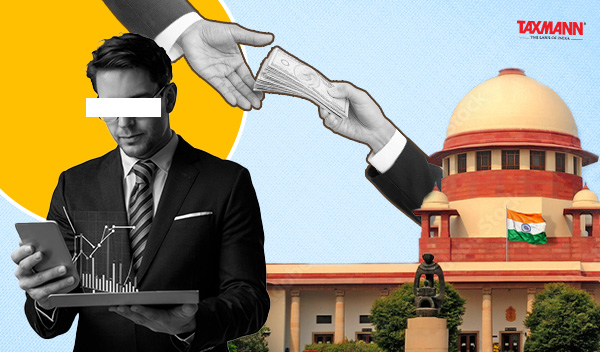Refund Allowed on Export of Design Services to Foreign Group Companies | HC
- Blog|News|GST & Customs|
- 2 Min Read
- By Taxmann
- |
- Last Updated on 21 June, 2025

Case Details: Sundyne Pumps and Compressors India (P.) Ltd. vs. Union of India - [2025] 175 taxmann.com 685 (Bombay)
Judiciary and Counsel Details
- B.P. Colabawalla & Firdosh P. Pooniwalla, JJ.
-
Prakash Shah, Sr. Adv., Jas Sanghavi, Mohit Raval & Vikas Poojary, Advs. for the Petitioner.
-
Ms S. D. Vyas, Addl. G.P. & Aditya Deolekar, AGP for the Respondent.
Facts of the Case
The petitioner had provided design and engineering services to its group companies located outside India. Refund of unutilized input tax credit (ITC) on account of zero rated supplies had earlier been allowed by the Department for prior periods, against which no appeal had been preferred. Based on the same nature of supply, the petitioner filed refund applications for subsequent periods.
The jurisdictional officer under the CGST Act rejected the refund claims on the ground that the petitioner acted as an agent of the foreign recipient and that the services did not qualify as export and thereby zero rated supplies. It was asserted that the petitioner was merely an establishment of the foreign recipient due to the group company relationship. The petitioner relied upon Circular No. 161/2017/2021, dated 20-09-2021, which clarified that supply to a related party would also qualify as export of services. The matter was accordingly placed before the Bombay High Court.
High Court Held
The Bombay High Court held that the services supplied by the petitioner qualified as export and thereby zero rated supplies. It referred to Circular No. 161/2017/2021, dated 20-09-2021 and held that the requirement to constitute an ‘agent’ under the CGST Act is that the agent must supply goods or services on behalf of another person to a third party. It observed that, in the present case, there were only two parties involved, the petitioner and the foreign recipient, and thus the petitioner could not be treated as an agent. It further held that the petitioner was not a mere establishment of the foreign recipient merely by reason of being a group or sister company.
Concluding that the parties were independent and distinct, the Court held that the petitioner was eligible for refund of unutilized ITC on account of zero rated supplies in terms of Section 2(6), read with Sections 2(6) and 16 of the IGST Act, 2017, Section 54 of the CGST Act and Maharashtra GST Act, and Rule 89 of the CGST Rules, 2017 and Maharashtra GST Rules, 2017.
List of Cases Reviewed
- United Bank Ltd v. Debts Recovery Tribunal (1999) 4 SCC 69 (para 28)
- CCE v. Tata Tea Ltd. (2002) 9 SCC 17 (para 28)
- Xilinx India Technology Services (P.) Ltd. v. Special Commissioner Zone VIII [2023] 154 taxmann.com 312/99 GST 948/78 GSTL 24 (Delhi) (para 35)
- Mrs. Bacha F. Guzdar v. CIT [Civil Appeal No. 104 of 1954, dated 28-10-1954] (para 35). followed
List of Cases Referred to
- United Bank Ltd v. Debts Recovery Tribunal (1999) 4 SCC 69 (para 28)
- CCE v. Tata Tea Ltd. (2002) 9 SCC 17 (para 28)
- Bacha F. Guzdar v. CIT 1954 (10) TMI 2 (SC) (para 35)
- Xilinx India Technology Services (P.) Ltd. v. Special Commissioner Zone VIII [2023] 154 taxmann.com 312/99 GST 948/78 GSTL 24 (Delhi) (para 35)
- Mrs. Bacha F. Guzdar v. CIT [Civil Appeal No. 104 of 1954, dated 28-10-1954] (para 35).
Disclaimer: The content/information published on the website is only for general information of the user and shall not be construed as legal advice. While the Taxmann has exercised reasonable efforts to ensure the veracity of information/content published, Taxmann shall be under no liability in any manner whatsoever for incorrect information, if any.

Taxmann Publications has a dedicated in-house Research & Editorial Team. This team consists of a team of Chartered Accountants, Company Secretaries, and Lawyers. This team works under the guidance and supervision of editor-in-chief Mr Rakesh Bhargava.
The Research and Editorial Team is responsible for developing reliable and accurate content for the readers. The team follows the six-sigma approach to achieve the benchmark of zero error in its publications and research platforms. The team ensures that the following publication guidelines are thoroughly followed while developing the content:
- The statutory material is obtained only from the authorized and reliable sources
- All the latest developments in the judicial and legislative fields are covered
- Prepare the analytical write-ups on current, controversial, and important issues to help the readers to understand the concept and its implications
- Every content published by Taxmann is complete, accurate and lucid
- All evidence-based statements are supported with proper reference to Section, Circular No., Notification No. or citations
- The golden rules of grammar, style and consistency are thoroughly followed
- Font and size that’s easy to read and remain consistent across all imprint and digital publications are applied



 CA | CS | CMA
CA | CS | CMA
